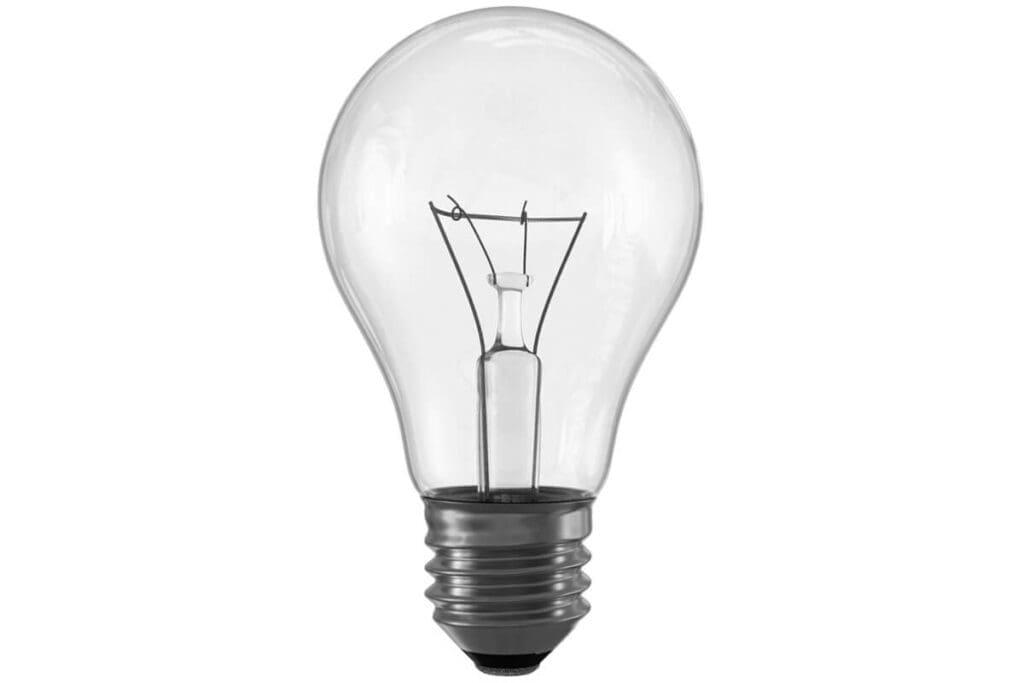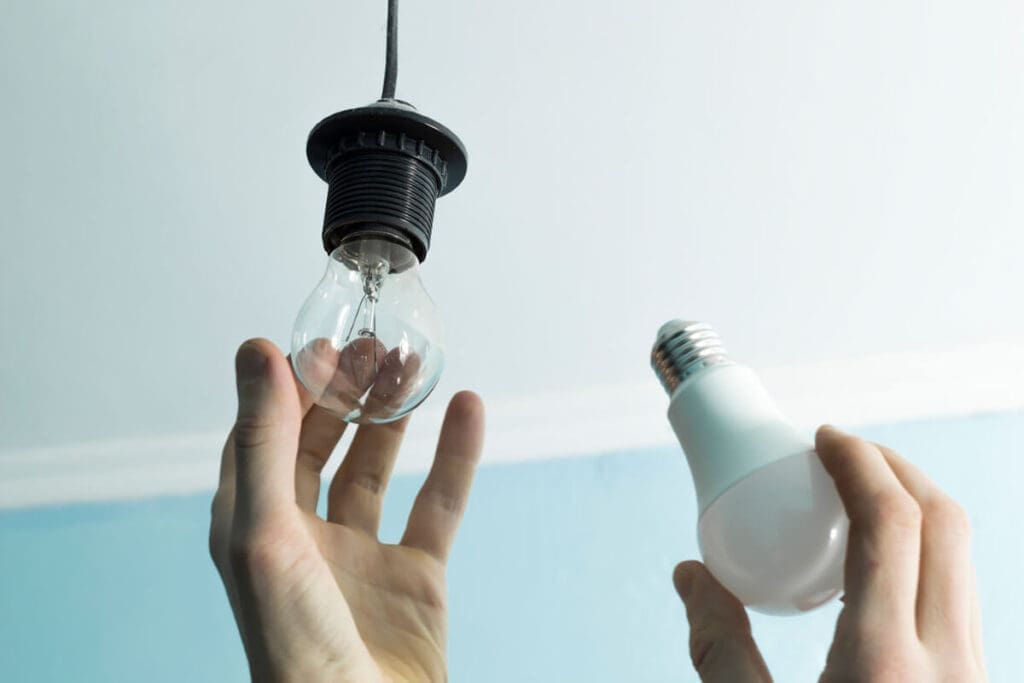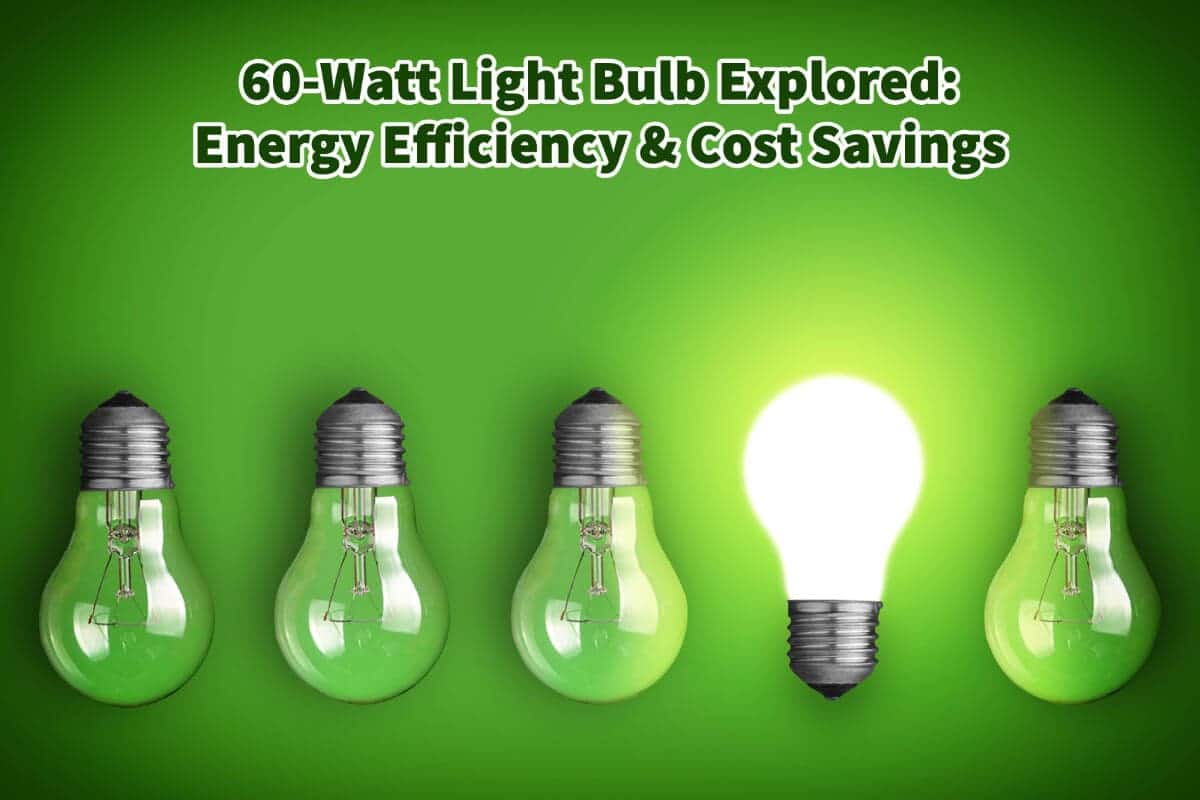Lighting technology has come a long way since Thomas Edison famously introduced the world to the wonder of the incandescent light bulb. Thomas Edison’s invention is still one of the greatest inventions ever.
But light bulbs have transformed over the last years, like many other things. New lightbulbs have come about along with new regulations, making it confusing what kind of lightbulb you should buy. Read on as we will explore the reasons behind this change and delve into the benefits of CFL and LED bulbs and their energy savings and cost advantages.
Table of Contents
- What Is A 60-Watt Light Bulb Explored: A Guide To Energy Efficiency And Cost Savings
- The Math On Energy Savings For A 60 Watt Light Bulb
- Related Content
What Is A 60-Watt Light Bulb Explored: A Guide To Energy Efficiency And Cost Savings

With the need to conserve energy and reduce reliance on fossil fuels, the United States and other countries worldwide are phasing out incandescent bulbs in favor of more efficient alternatives. This change affects all lightbulbs, including the 60 Watt lightbulb.
Why The Change With Light Bulbs?
The phasing out of Thomass Edison’s incandescent light bulbs was initiated by the Energy Independence and Security Act of 2007. This legislation aimed to improve energy efficiency and reduce environmental impact.
By setting maximum power limits for light bulbs about the amount of light produced, the law encouraged manufacturers to develop more efficient lighting technologies. These new technologies resulted in the CFL and LED light bulbs.
Do You Have To Buy A CFL Or LED Light Bulb?
While it is still possible to purchase incandescent bulbs, opting for CFL or LED bulbs is highly recommended. These alternatives offer numerous benefits over traditional incandescent bulbs.
Manufacturers supported the energy act as it simultaneously eliminated the need to produce both old and new bulb types. Furthermore, as the country focused on energy conservation, the widespread adoption of CFL and LED bulbs contributed to significant energy savings.
The Math On Energy Savings For A 60 Watt Light Bulb
These new regulations,s do make a difference and help save energy. They are also more cost-effective. To understand the energy efficiency of different bulbs, comparing their light output and efficiency is essential.

A standard 60-watt incandescent bulb produces around 820 lumens, resulting in an efficiency of 13.67 lumens per watt. In comparison, a high-quality CFL bulb like the GE Reveal Bright from the Start uses 15 watts to produce 740 lumens, achieving an efficiency of 49.33 lumens per watt.
LED bulbs surpass these numbers, with a standard 60-watt replacement LED producing 800 lumens using only 9 watts, resulting in an efficiency of 84.21 lumens per watt.
This significant increase in efficiency demonstrates why CFL and LED bulbs are superior choices for energy-conscious consumers.
The Cost Savings Vs. Costs
Although the upfront cost of CFL and LED bulbs may seem higher than incandescent bulbs, the long-term cost savings outweigh the initial investment.
When LED bulbs were first introduced, a 60-watt equivalent LED bulb cost was expensive, but today you can purchase them much cheaper.

The advantage of LED bulbs is that they will last much longer than other bulbs and are more energy efficient. So even if they cost more over the long there, there are significant savings.
LED bulbs have an average lifespan of 25,000 hours or more, equating to approximately 22.8 years. This extended lifespan eliminates the hassle of frequently replacing bulbs and reduces long-term costs.
While incandescent bulbs were initially cheaper, their short lifespan (usually around 1,500 hours) resulted in frequent replacements, which added to the overall cost.
The Best 60 Watt And Other Watt Bulbs
Choosing the best bulbs for your needs involves considering various factors. For those conditioned to the warm tone of incandescent bulbs, the lighting industry is improving the color rendering capabilities of CFL and LED bulbs.
Color temperature and the Color Rendering Index (CRI) play crucial roles in determining the quality of light emitted by bulbs, and preferences can vary among individuals. However, with ongoing advancements in lighting technology, manufacturers continuously refine their designs to provide better options for consumers.
Phasing Out Of Incandescent Light Bulbs
The phasing out of incandescent light bulbs is driven by the need for energy efficiency and reduced reliance on fossil fuels. CFL and LED bulbs offer substantial advantages over traditional incandescent bulbs, including higher efficiency, longer lifespan, and cost savings.
The Energy Independence and Security Act of 2007 in the United States set the stage for this transition, encouraging manufacturers to develop more efficient lighting options.

By comparing the light output and efficiency of different bulbs, it becomes clear that CFL and LED bulbs outperform incandescent bulbs by a significant margin.
The math on energy savings demonstrates that CFL bulbs achieve an efficiency of 49.33 lumens per watt, while LED bulbs reach an impressive efficiency of 84.21 lumens per watt. This means that LED bulbs are more than six times as efficient as incandescent bulbs, resulting in substantial energy savings over time.
When considering the cost, looking beyond the upfront price tag is essential. While CFL and LED bulbs may have been more expensive initially, their extended lifespan and lower energy consumption make them more cost-effective in the long run.
Incandescent bulbs typically last around 1,500 hours, while LED bulbs can last up to 25,000 or more. This longevity drastically reduces the frequency of replacements and the associated costs. Furthermore, LED and CFL bulbs are becoming less expensive worldwide.
The phase-out of incandescent light bulbs represents a significant shift towards energy-efficient lighting solutions. CFL and LED bulbs have emerged as the top contenders, offering superior efficiency, cost savings, and longevity compared to traditional incandescent bulbs.
The transition aligns with efforts to conserve energy and reduce environmental impact and provides consumers with lighting options that meet their preferences and budgetary considerations.
As technology continues to evolve, individuals must stay informed and make conscious choices when selecting the best home bulbs. Purchasing these energy efficient lightbulbs help you contribute to a greener and more sustainable future by embracing energy-efficient lighting.
Find out more about how Mondoro can help you create, develop, and manufacture excellent home decor and furniture products – don’t hesitate to contact me, Anita. Check out my email by clicking here or become a part of our community and join our newsletter by clicking here.
Mondoro gives out a FREE Lookbook to anyone interested. You can receive a copy of our latest Lookbook by clicking here.
Listen to our Podcast called Global Trade Gal. You can find it on all major podcast platforms. Try outlisteningn to one of our podcasts by clicking here.
Subscribe to our Mondoro Company Limited YouTube Channel with great videos and information by clicking here.
Related Content
Differences Between UL, CSA, and ETL Certifications
The UL, CSA, and ETL certifications are all tested and produced up to the same standard and testing; they are all certified for use in Canada and the United States. One of the significant differences between the UL, CSA, and ETL marks is that UL certification is the most highly recognized certification.
You can discover more by reading Differences Between UL, CSA, and ETL Certifications by clicking here.
How Underwriters Laboratories (UL) Make Money?
Underwriters Laboratories make money from contributions and grants, servicing and other fees, and investment income. When you view their tax returns, you can see that they make money through their servicing and fee structure.
You can discover more by reading How Underwriters Laboratories (UL) Make money by clicking here.
Is The UL Rating Acceptable In Canada?
The UL rating is only for the United States and is not used in Canada, but Canada does have a rating called ULC or cUL, which is essentially the same as UL but has been approved for Canada. Canada also has a CSA rating that is essentially the same as the cUL rating used in Canada.
To find out more about the Is The UL Rating Acceptable In Canada? by, clicking here.

